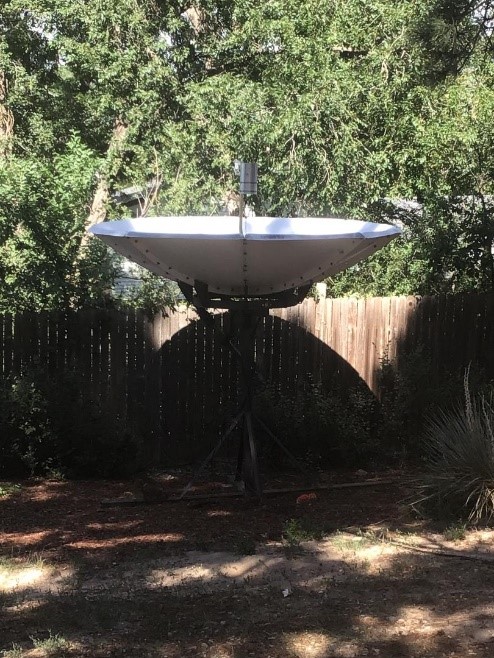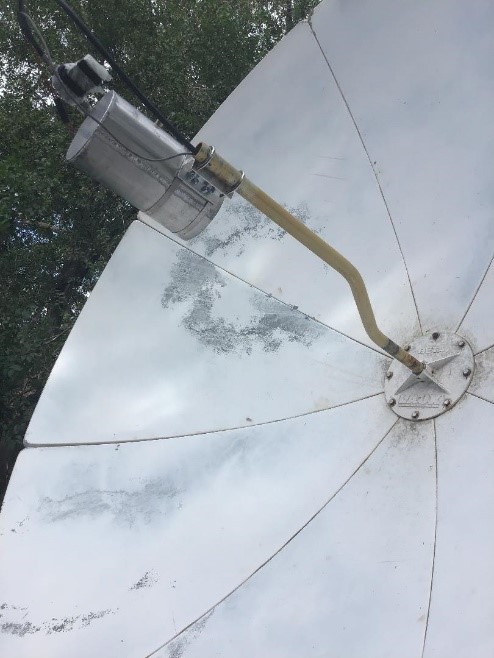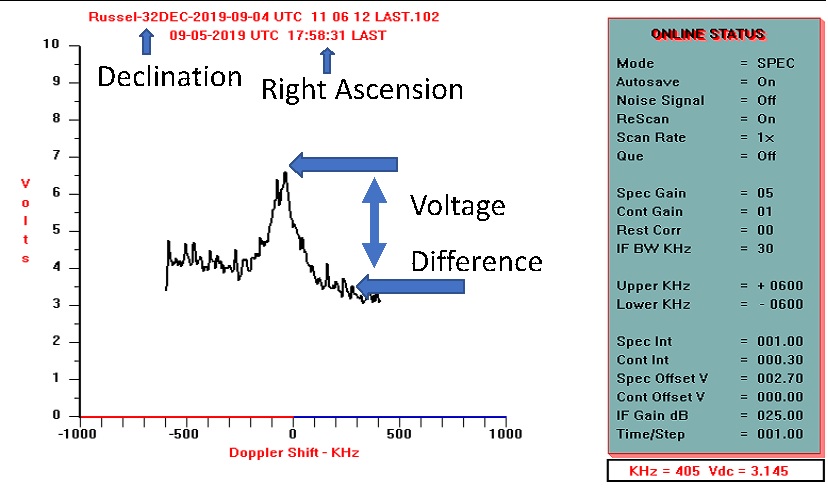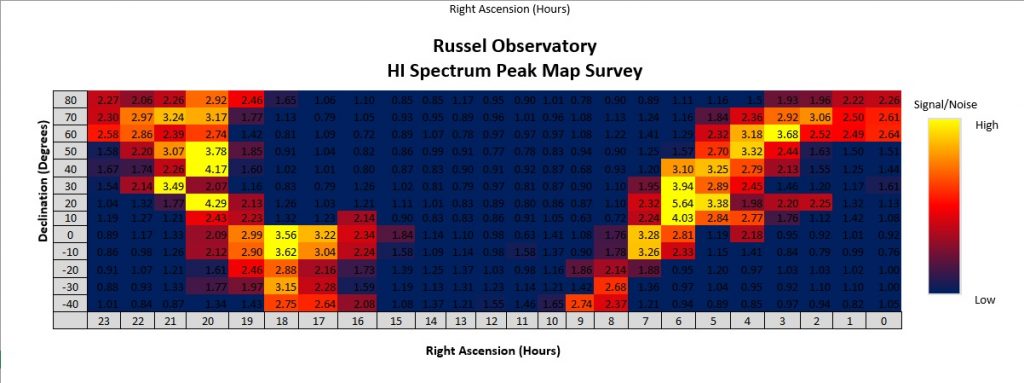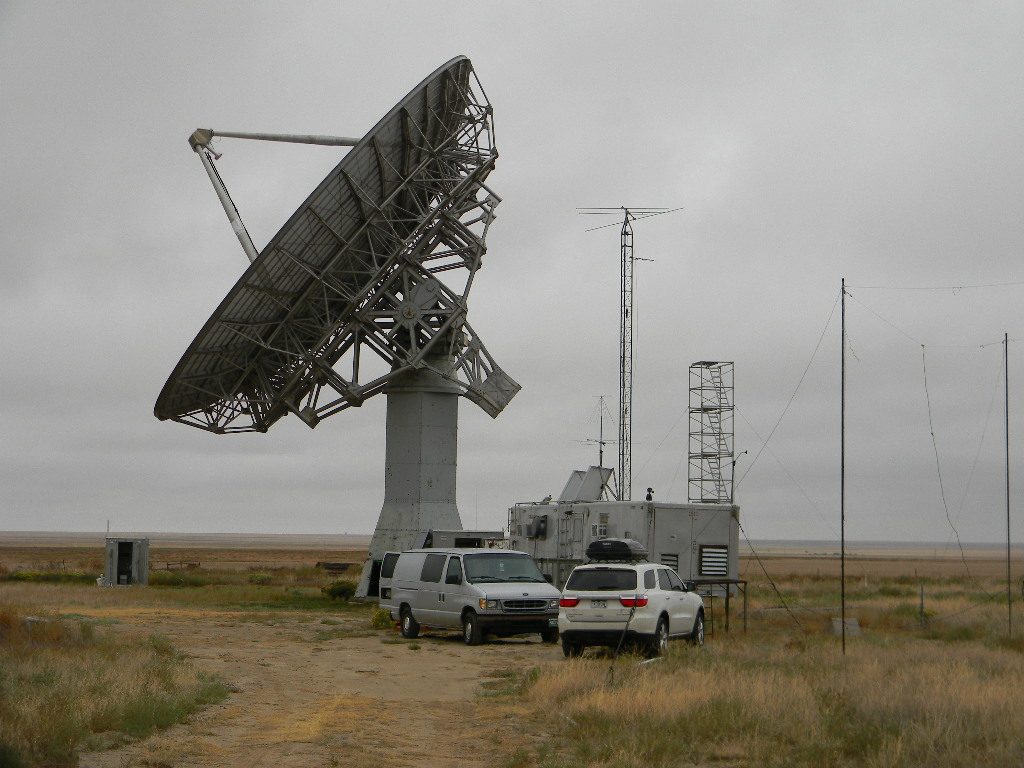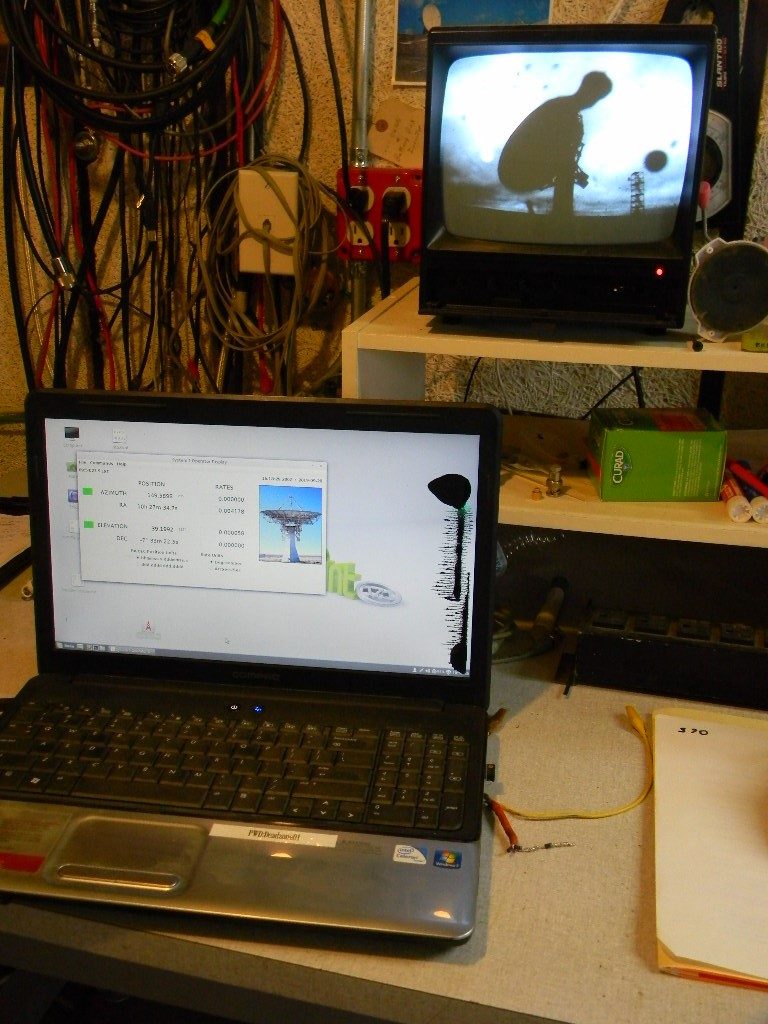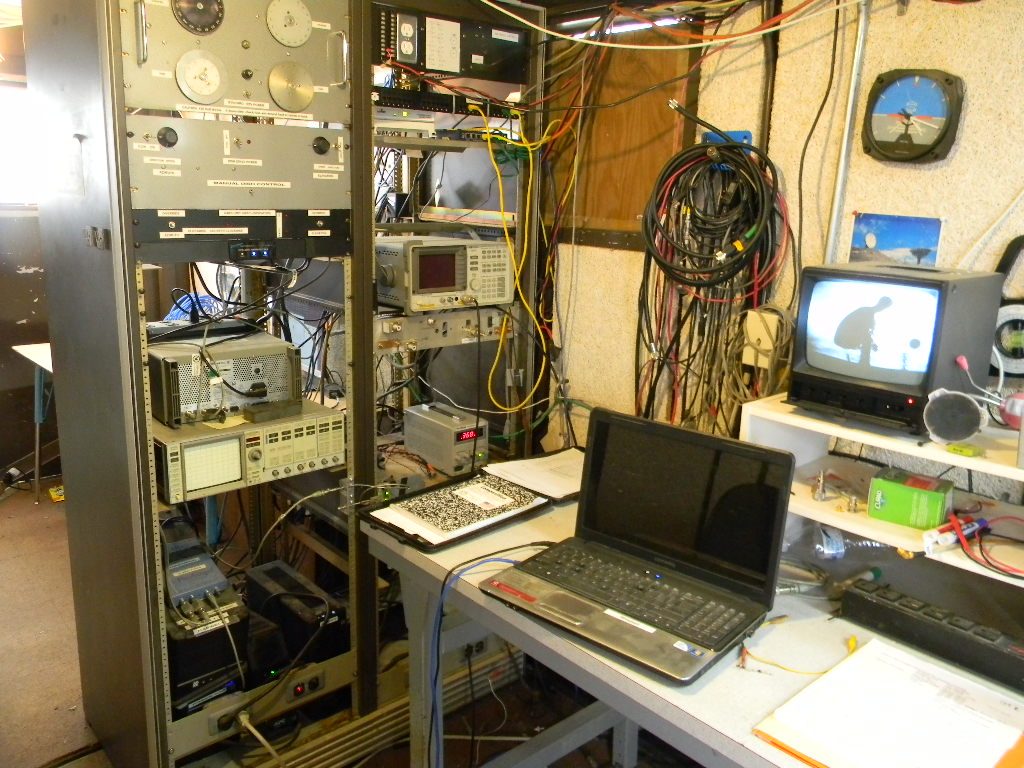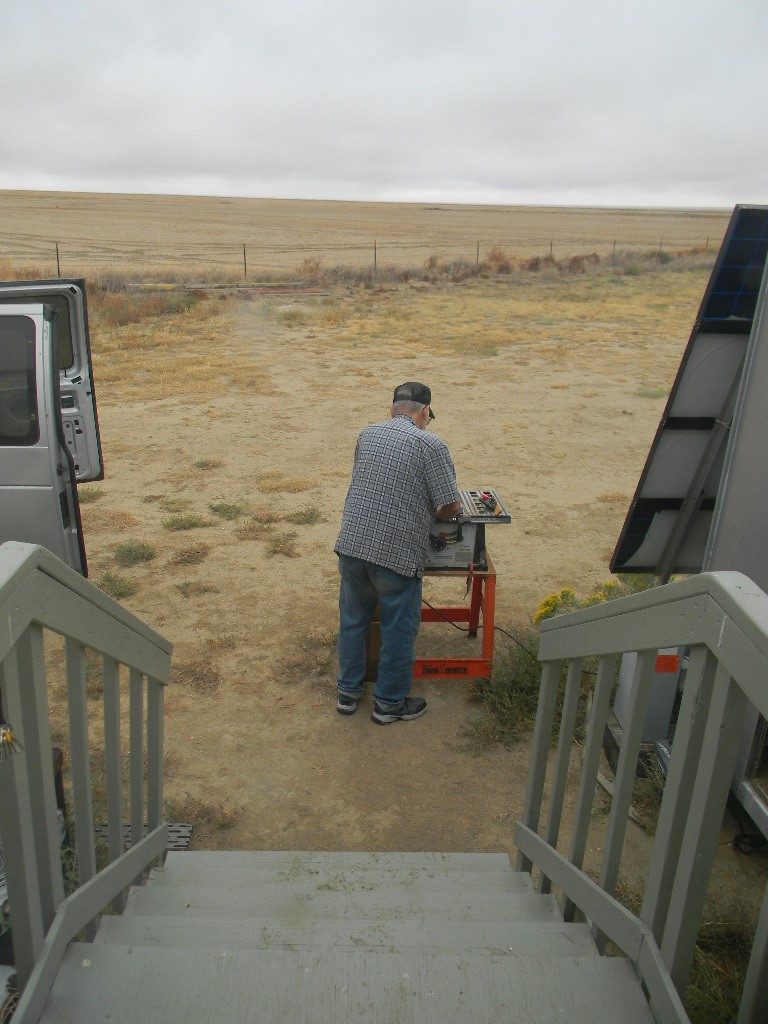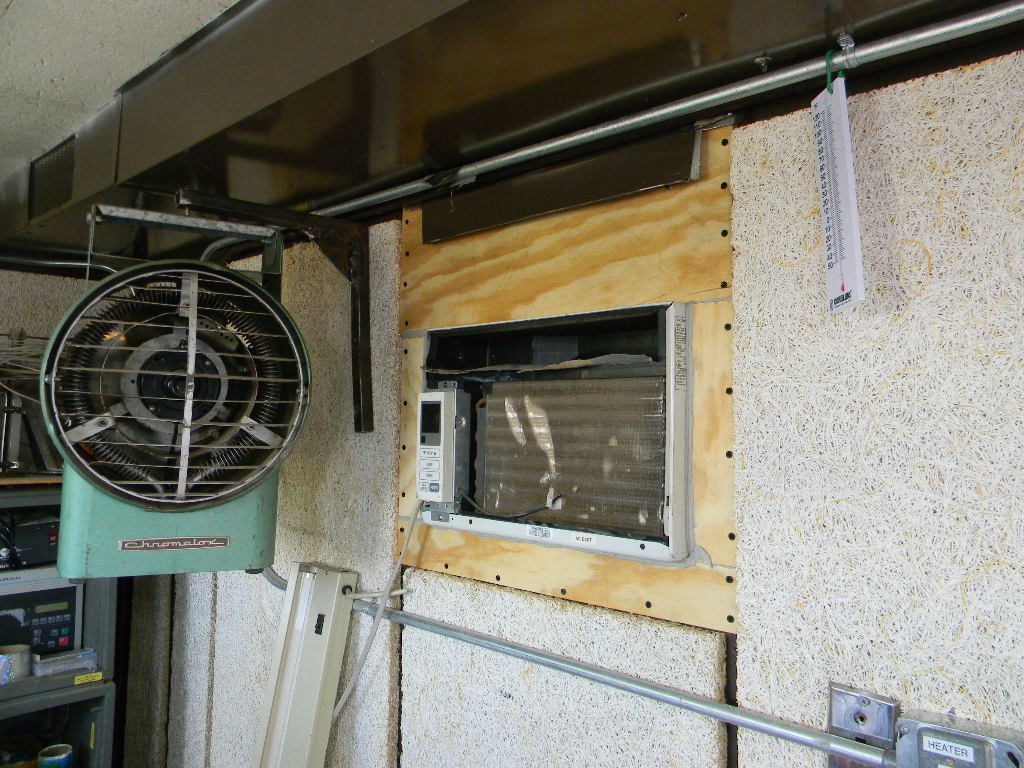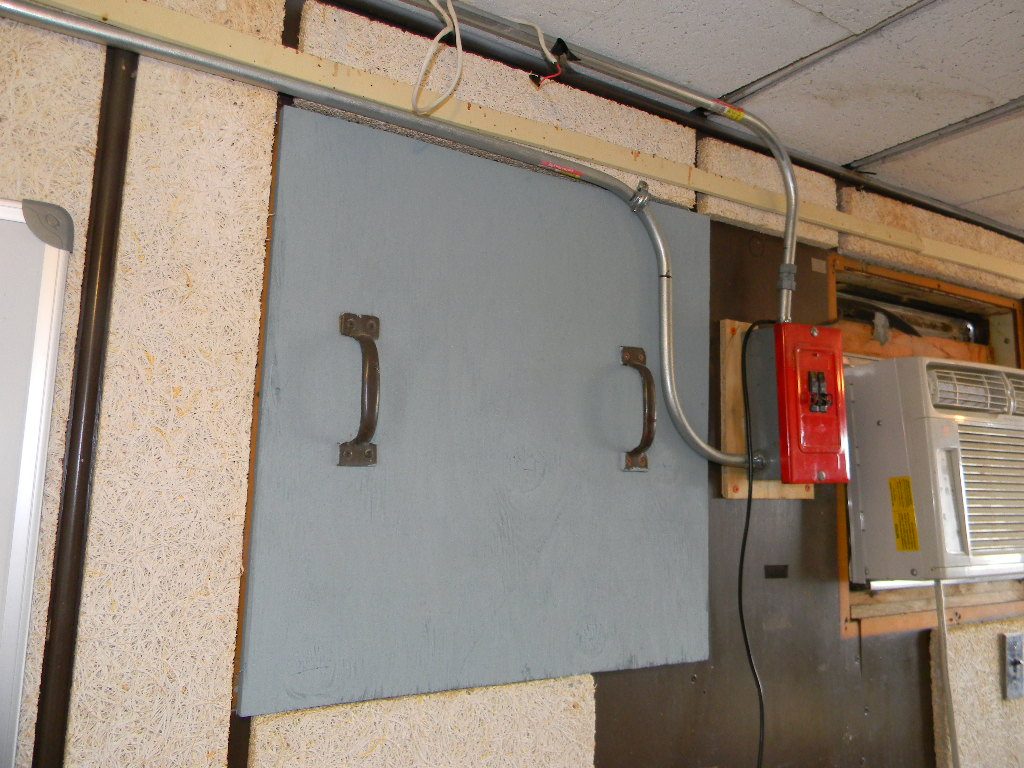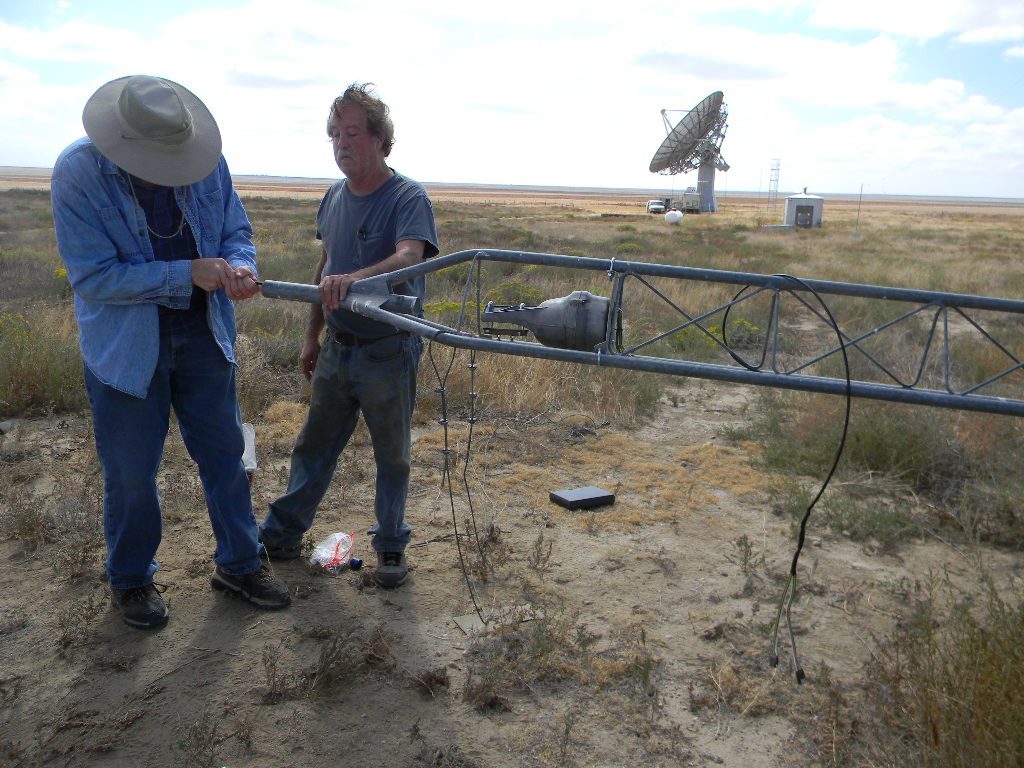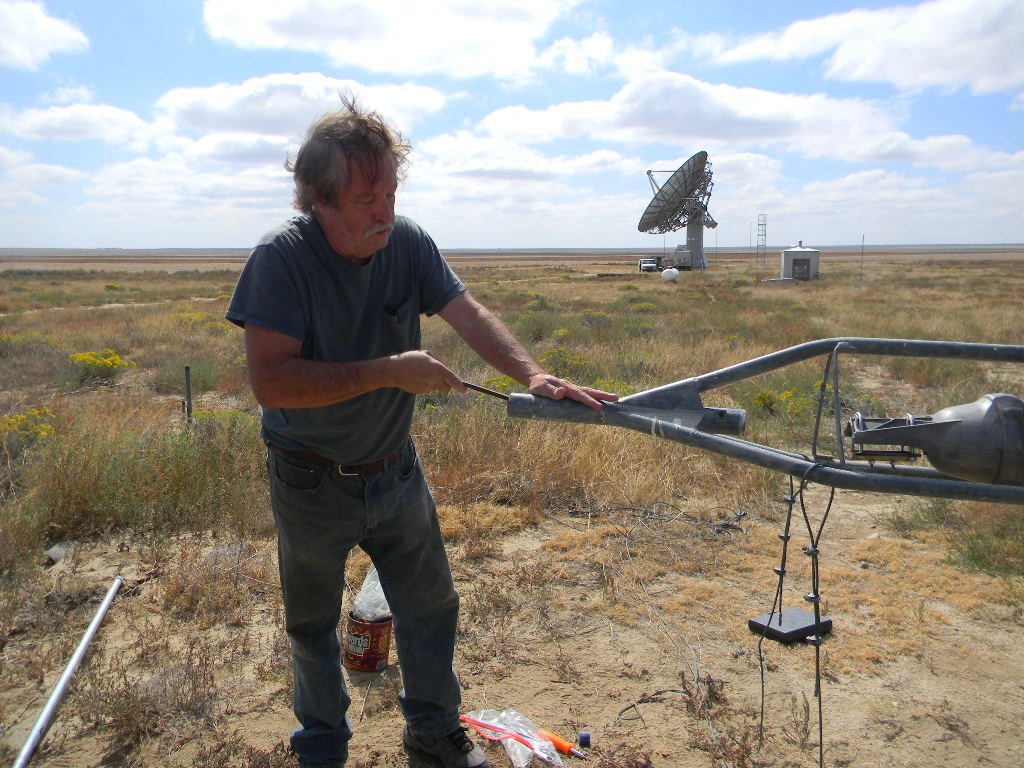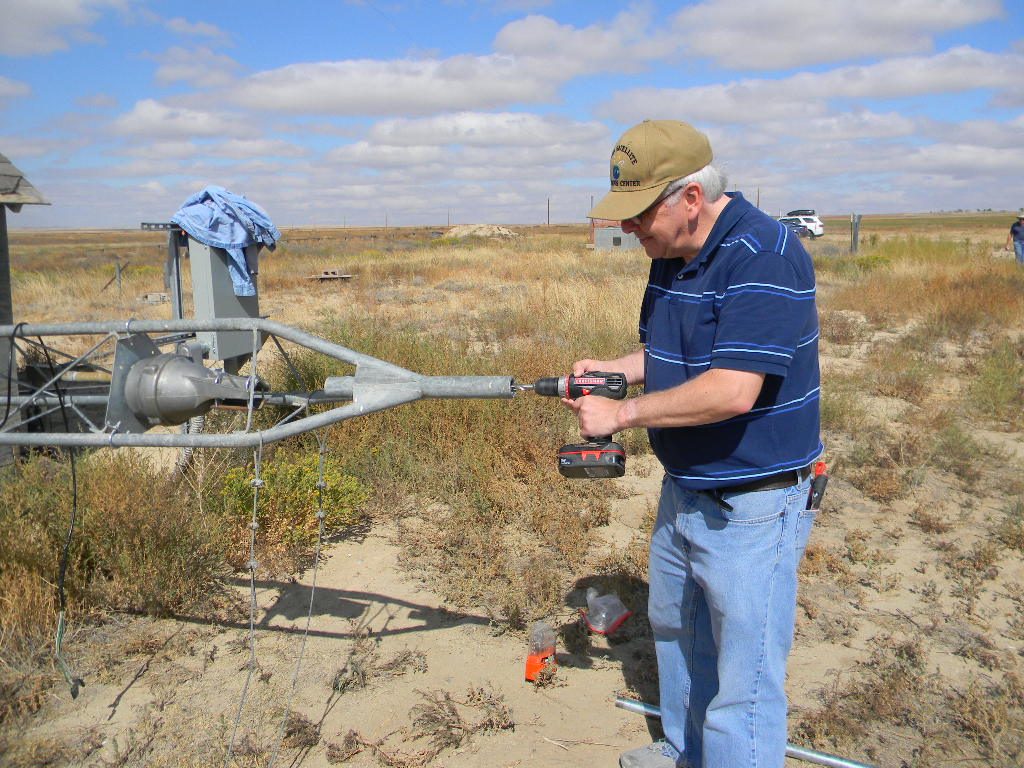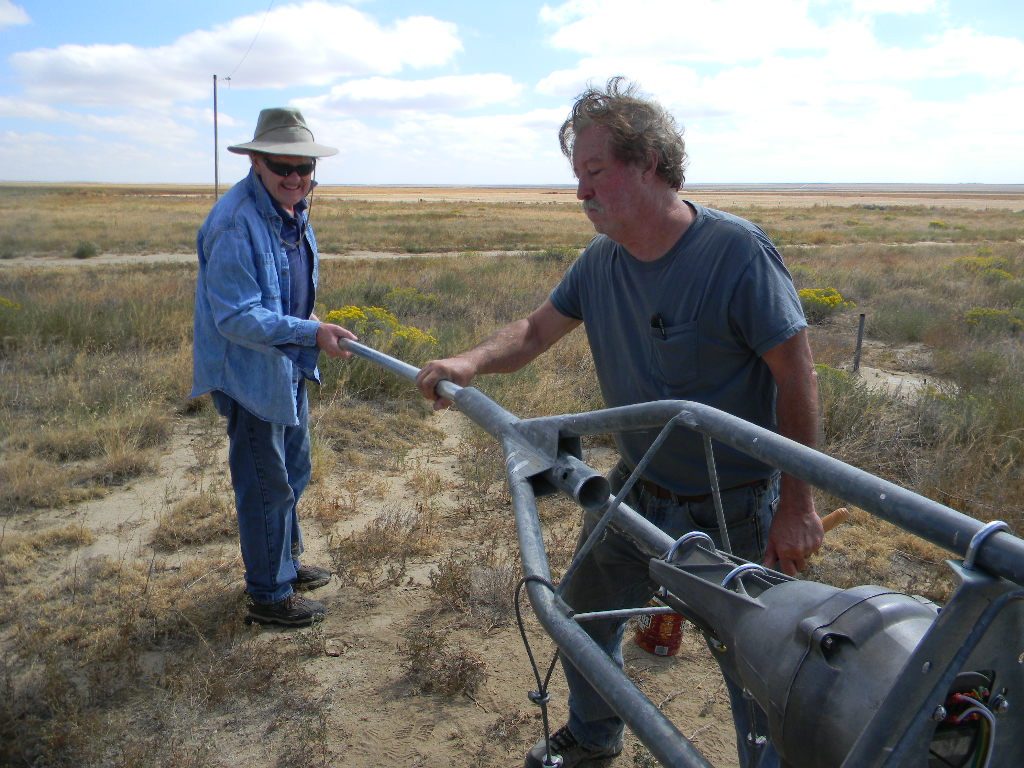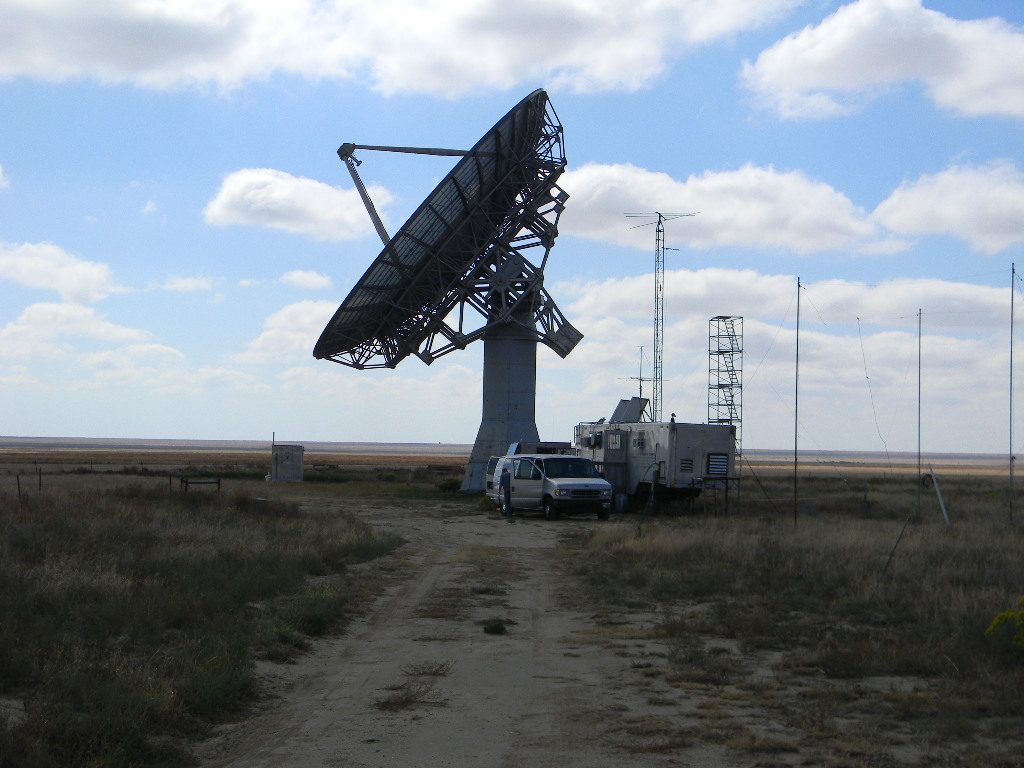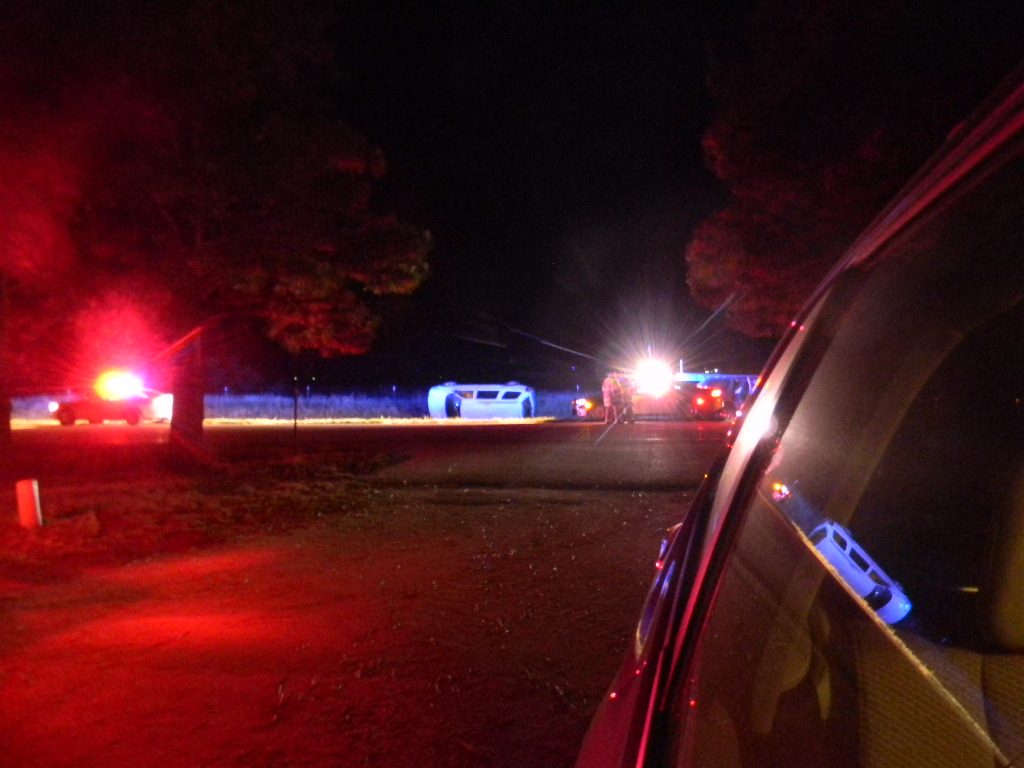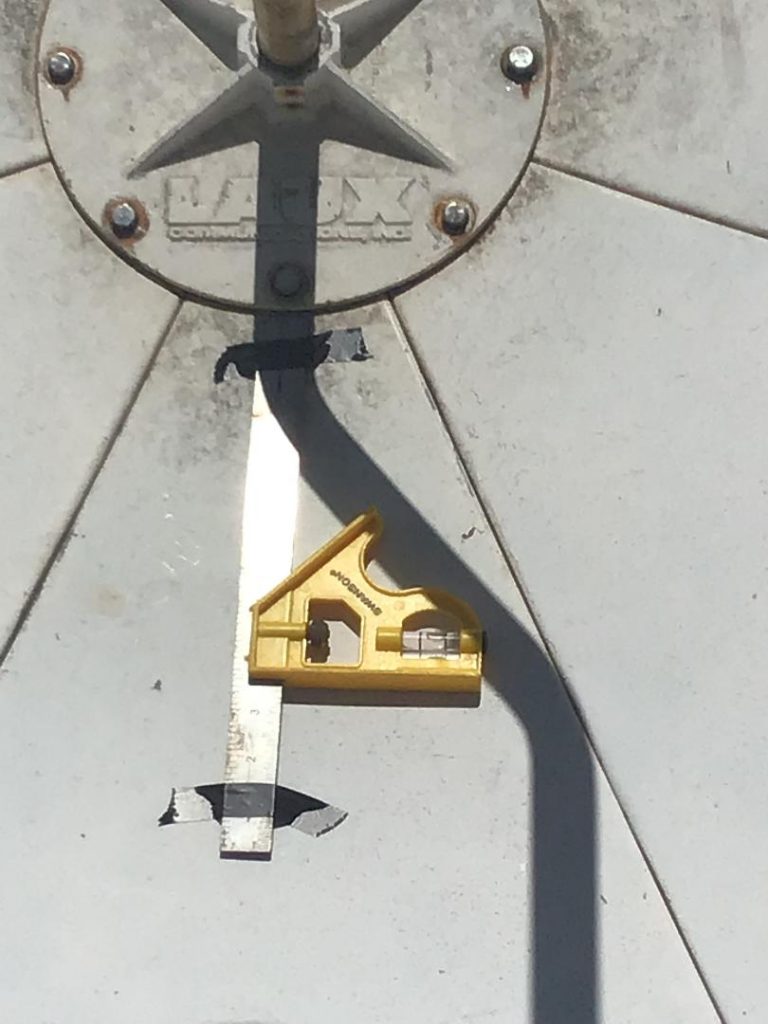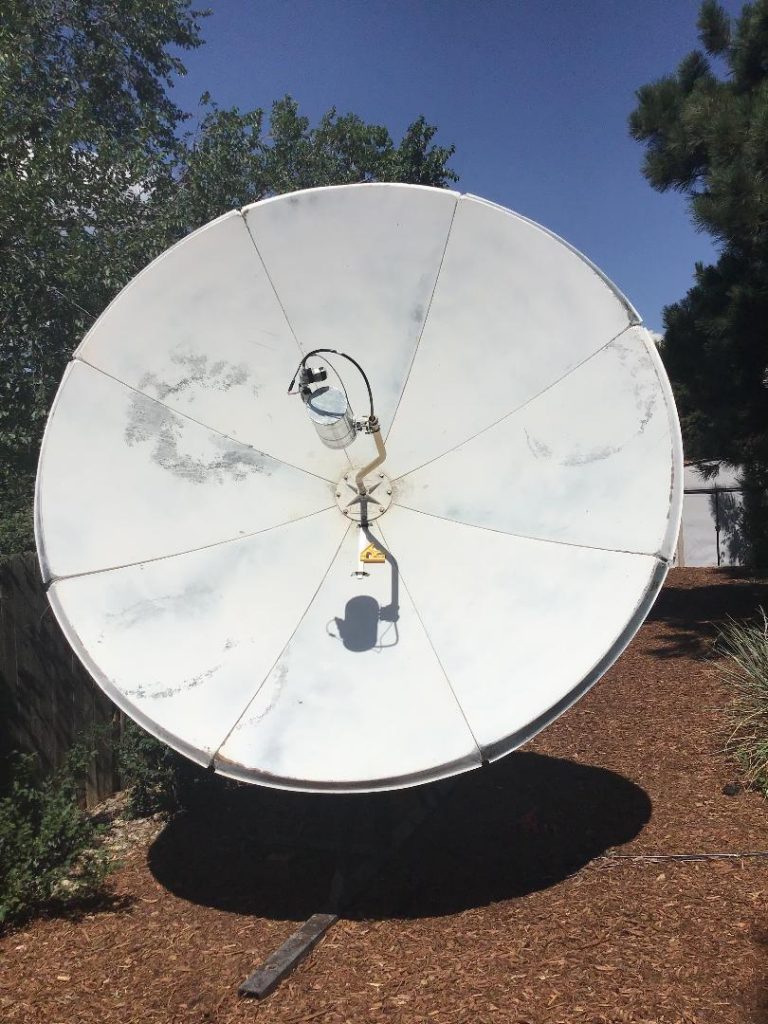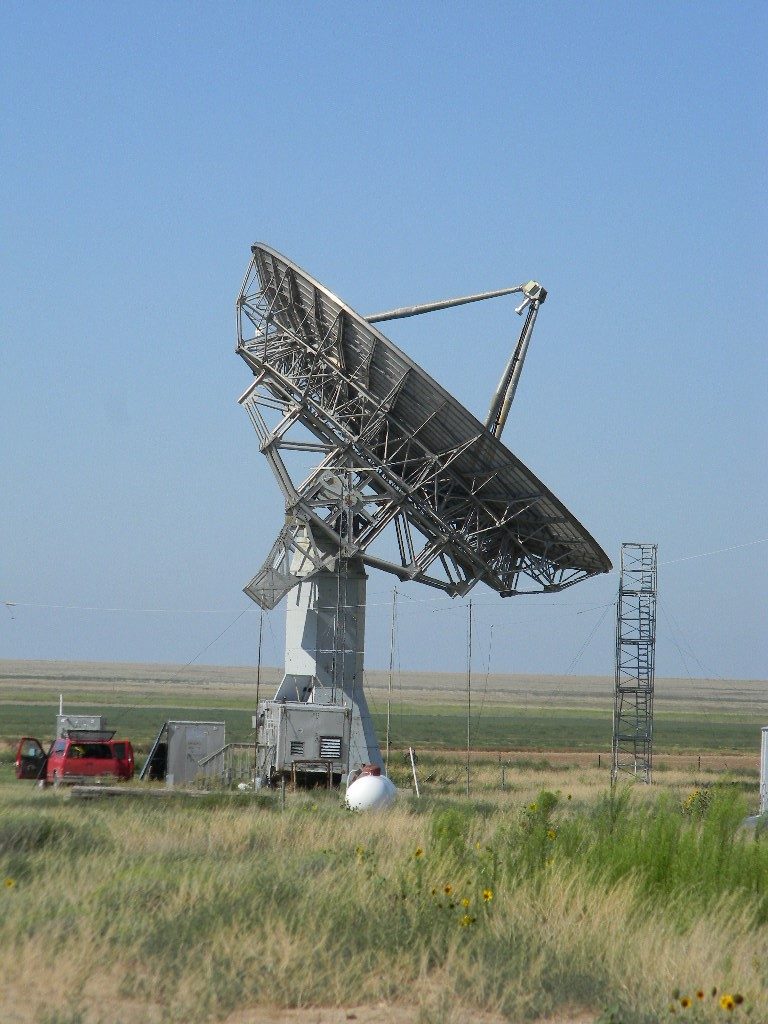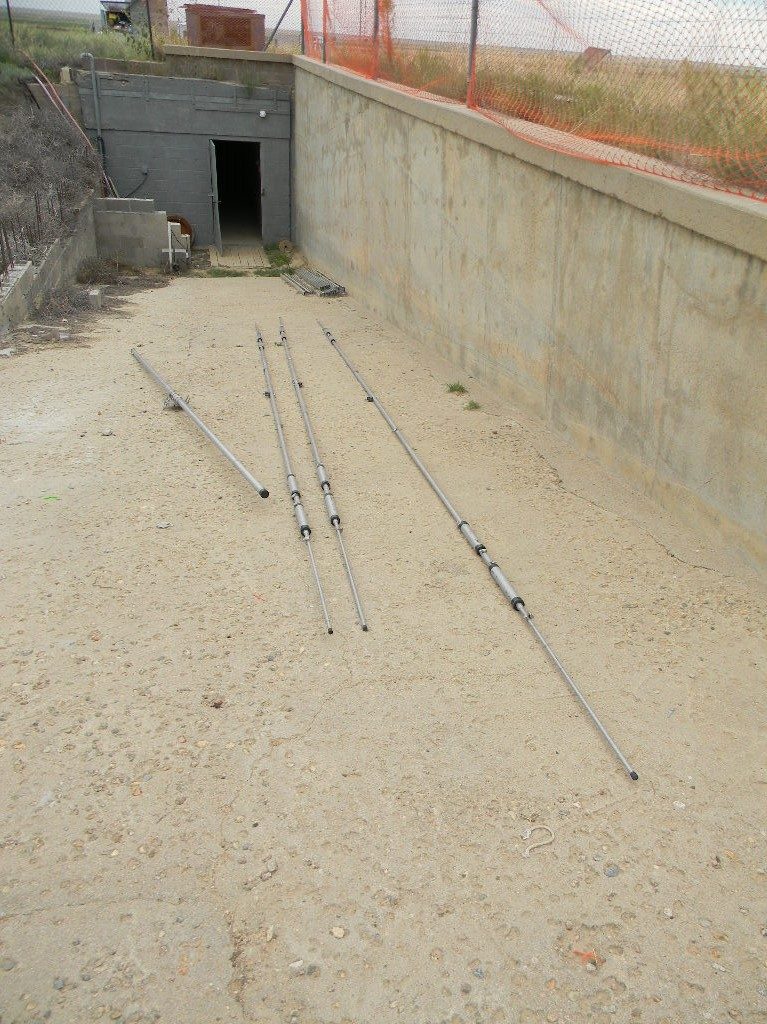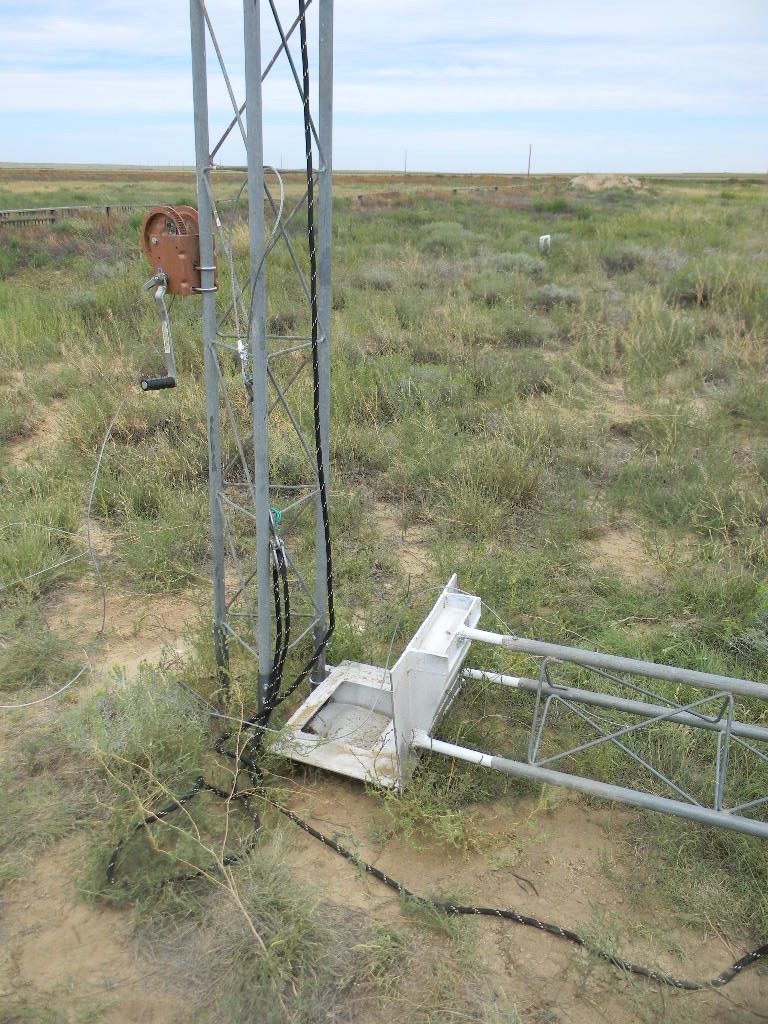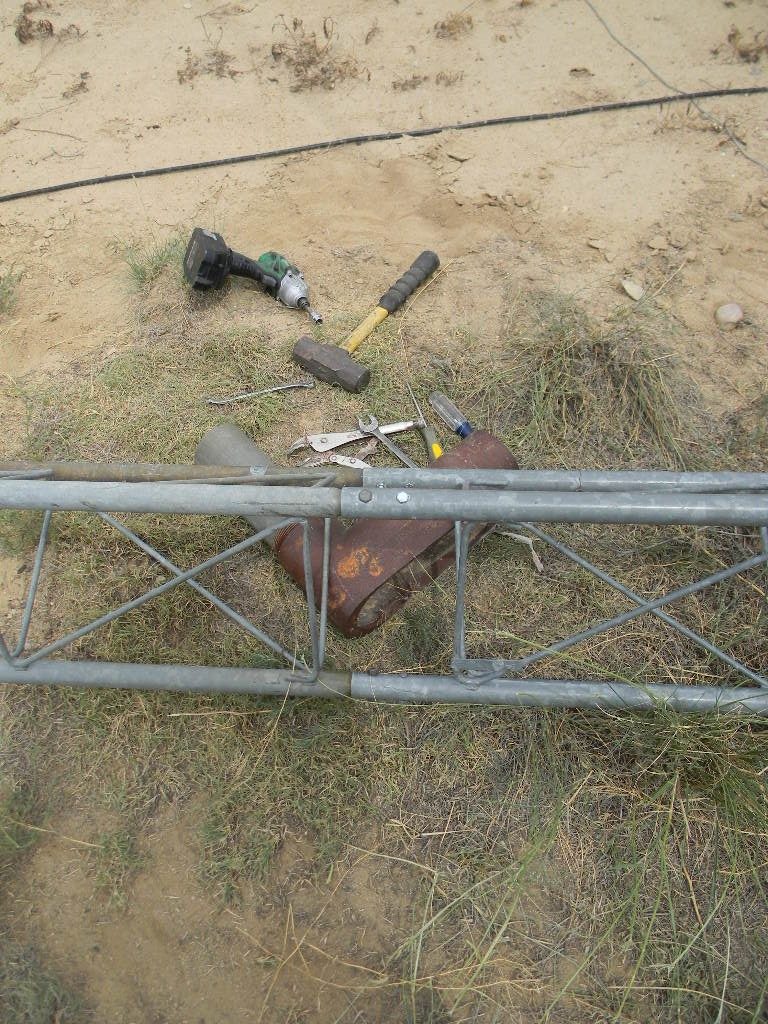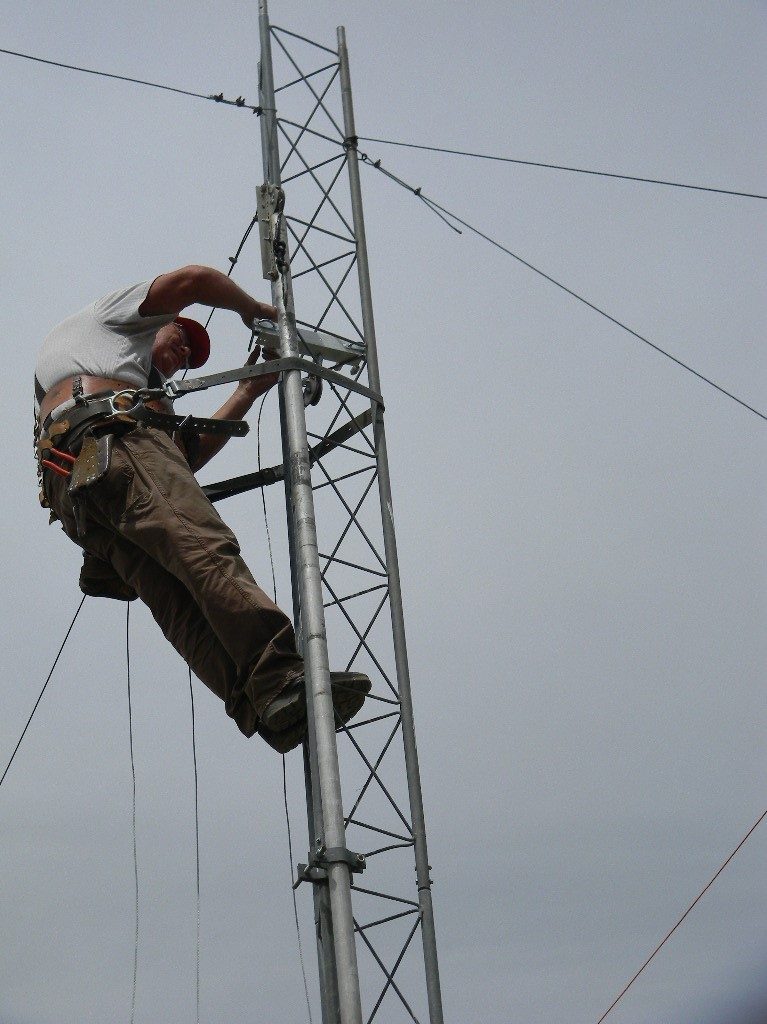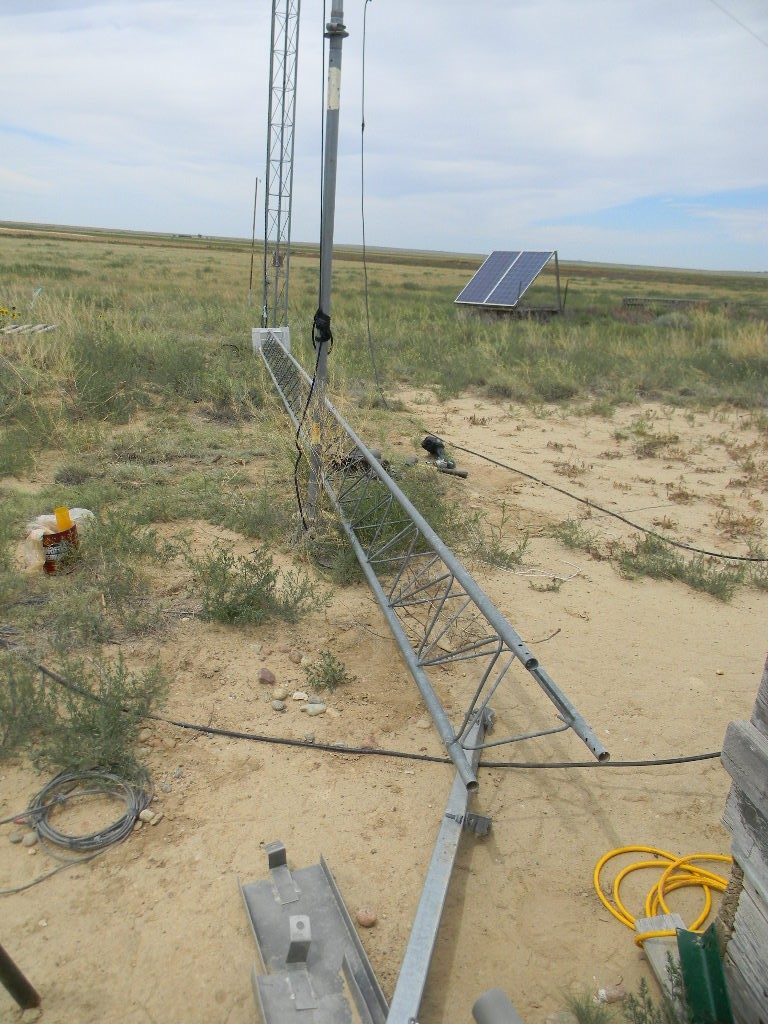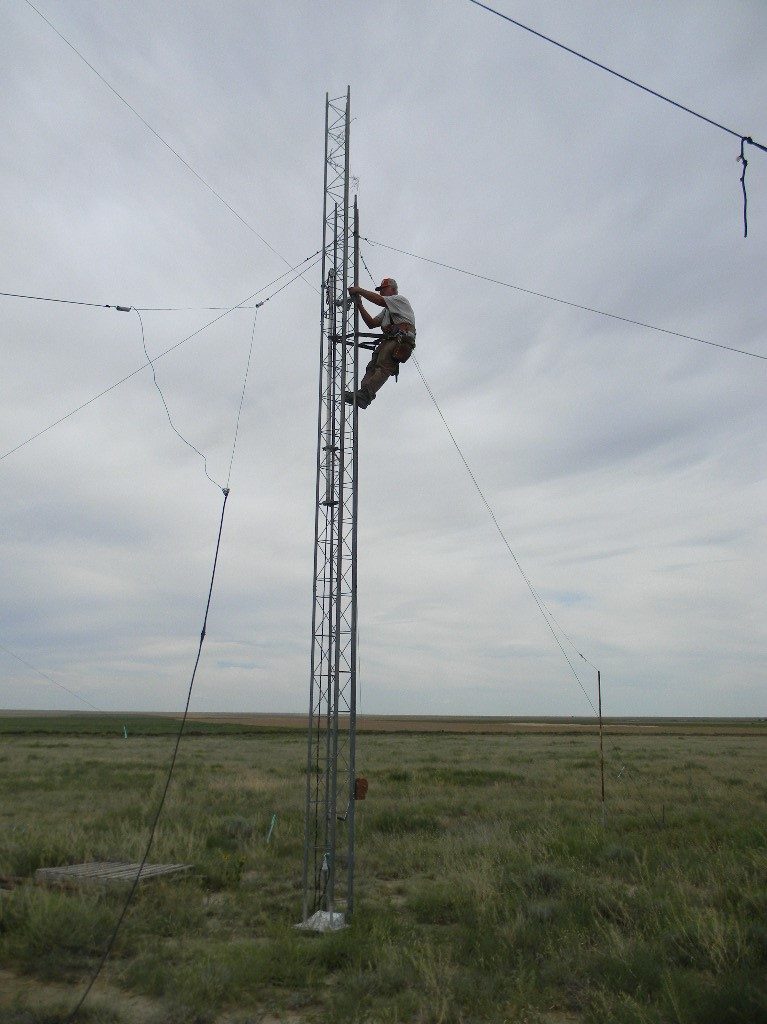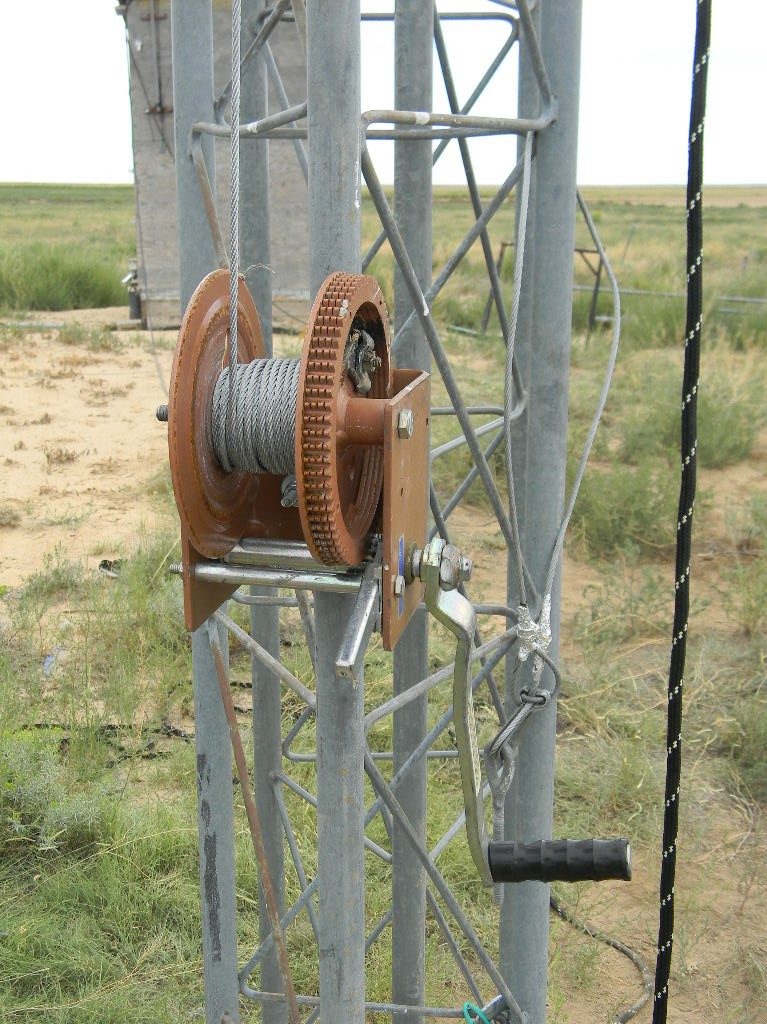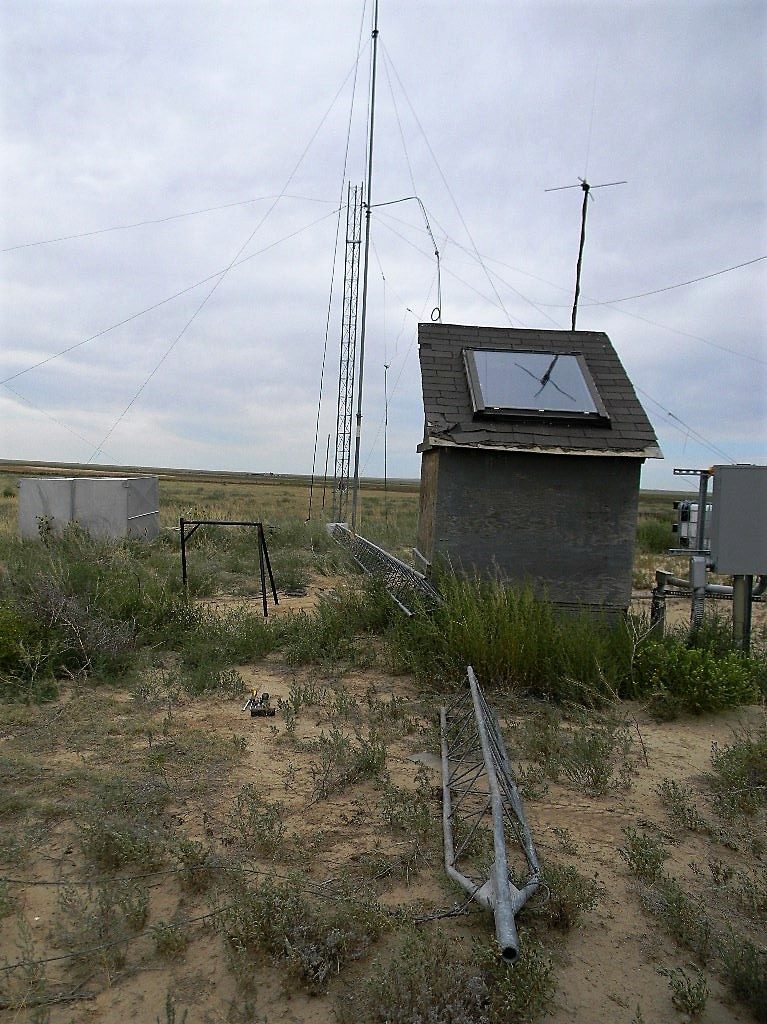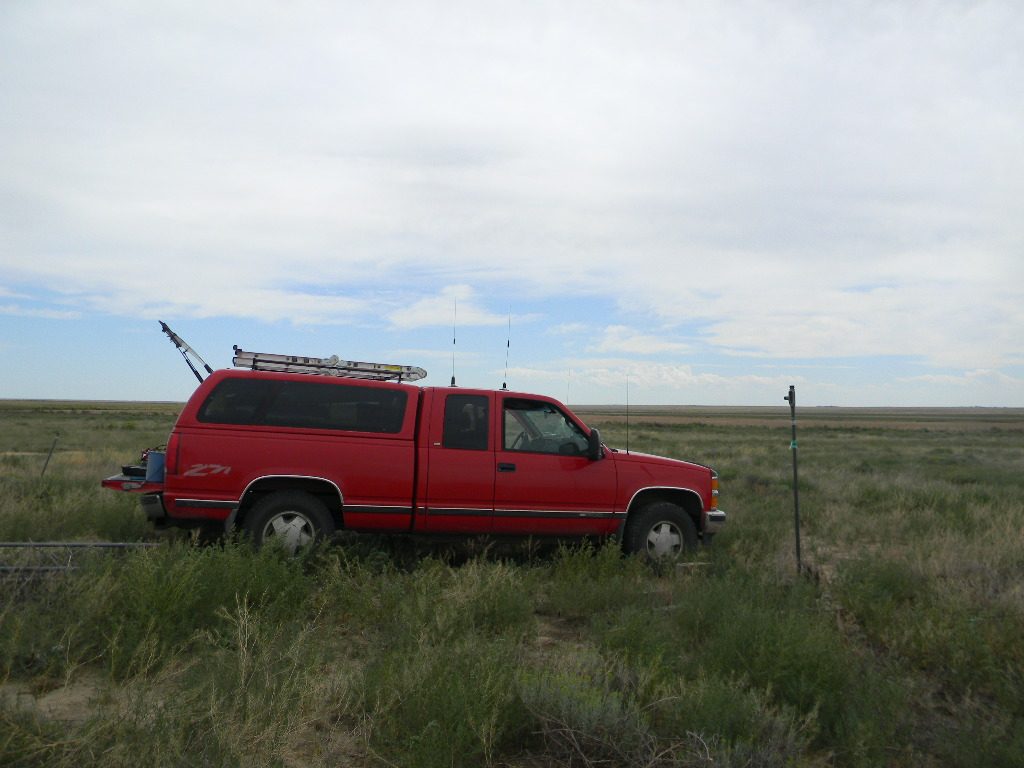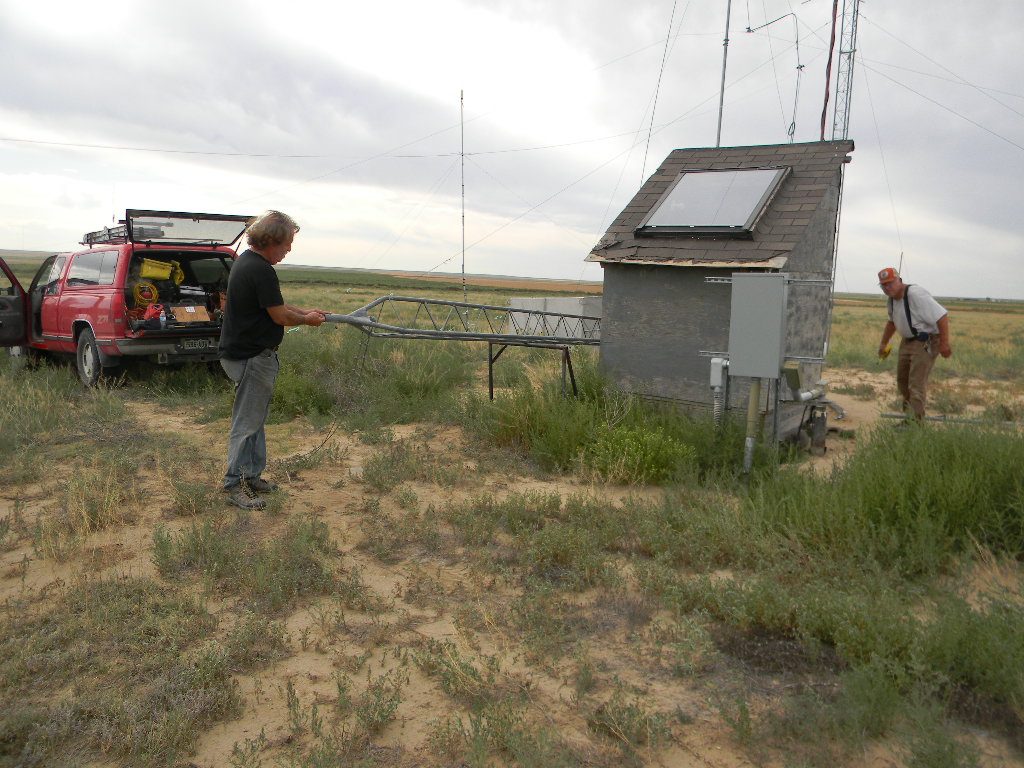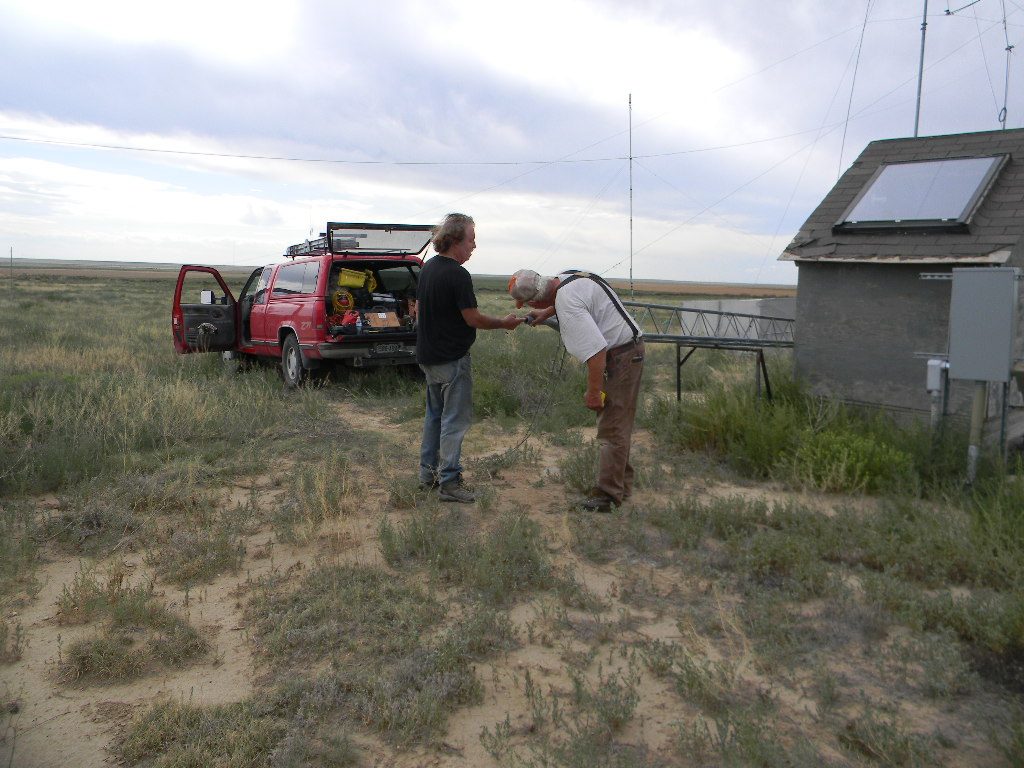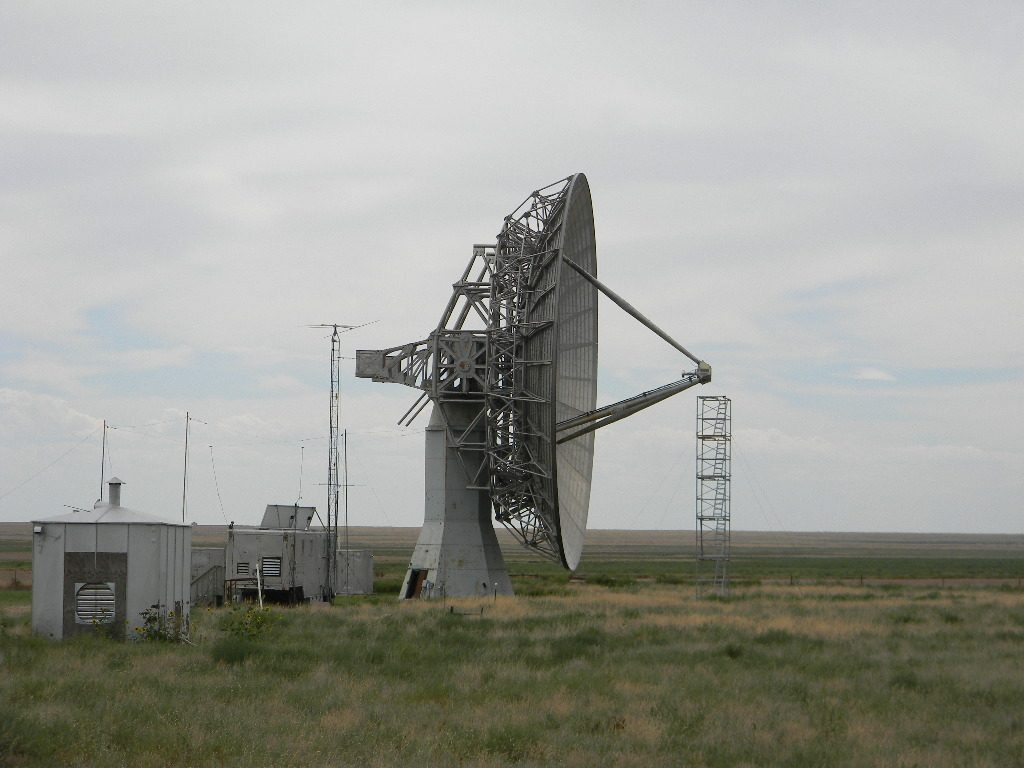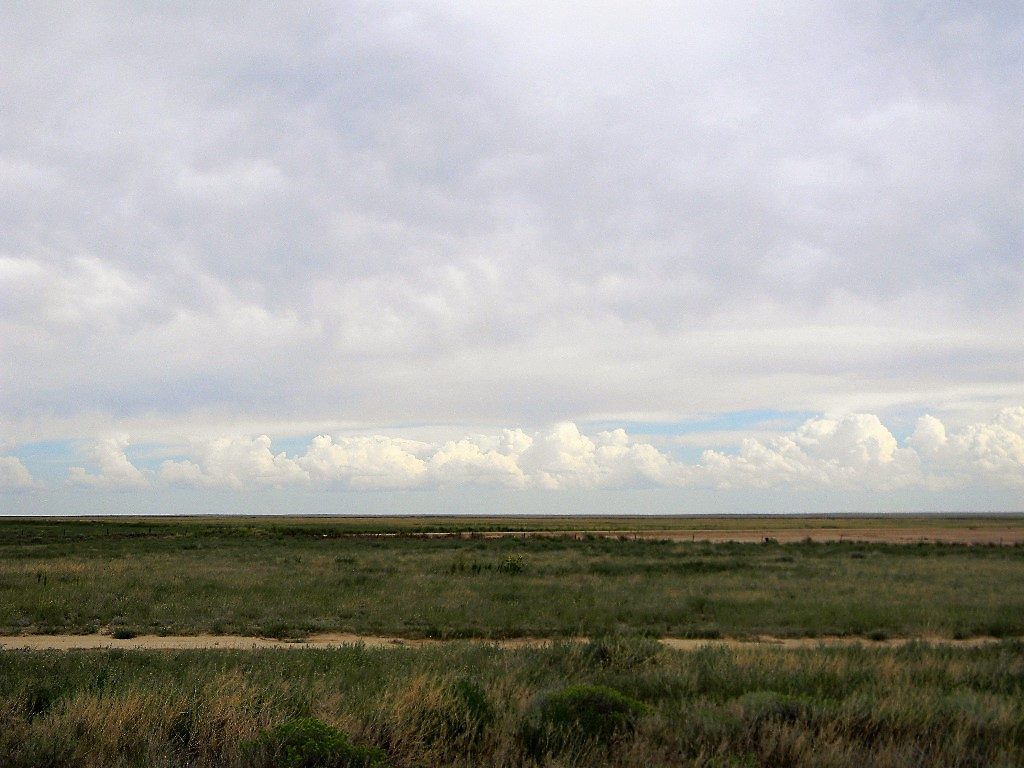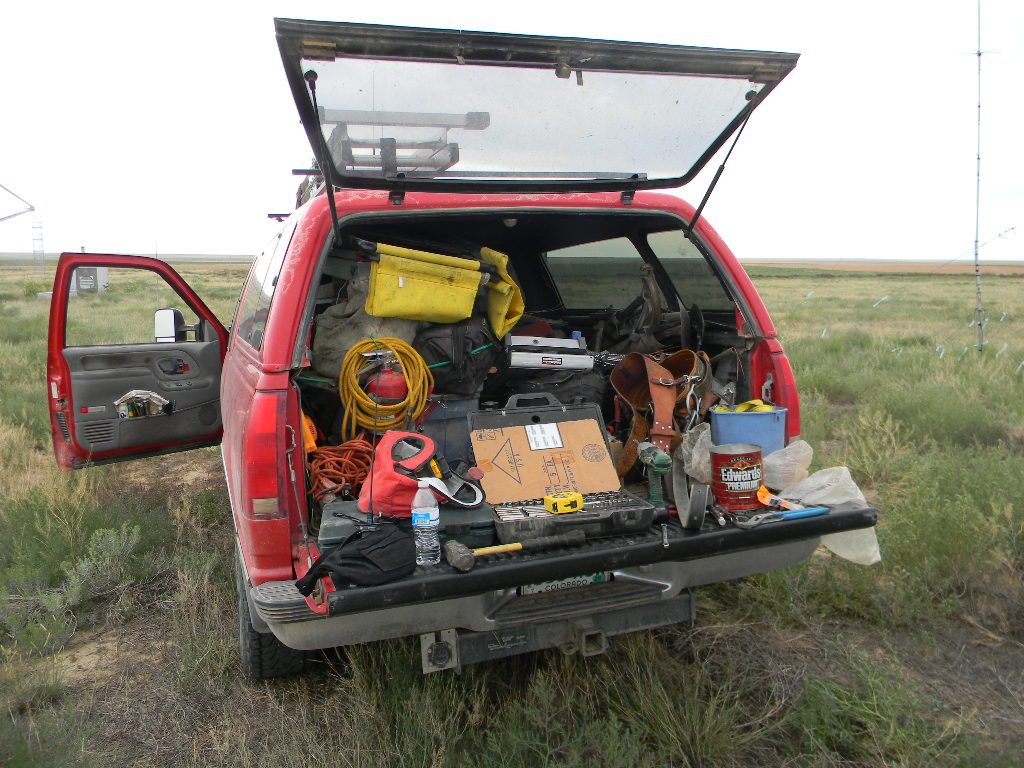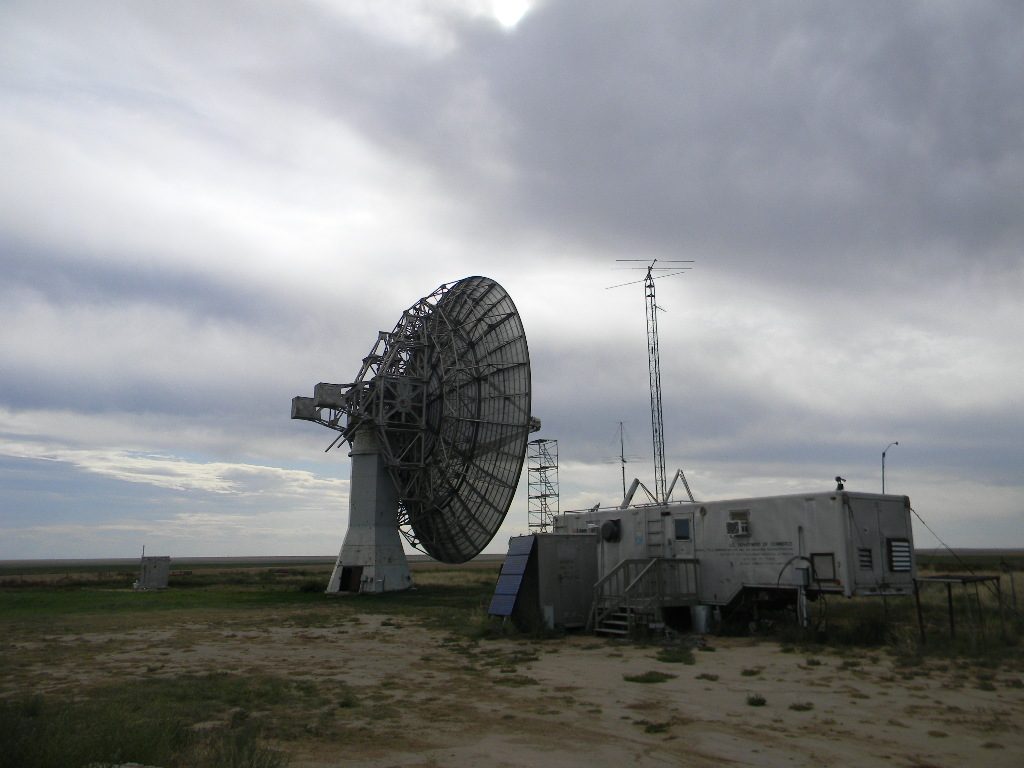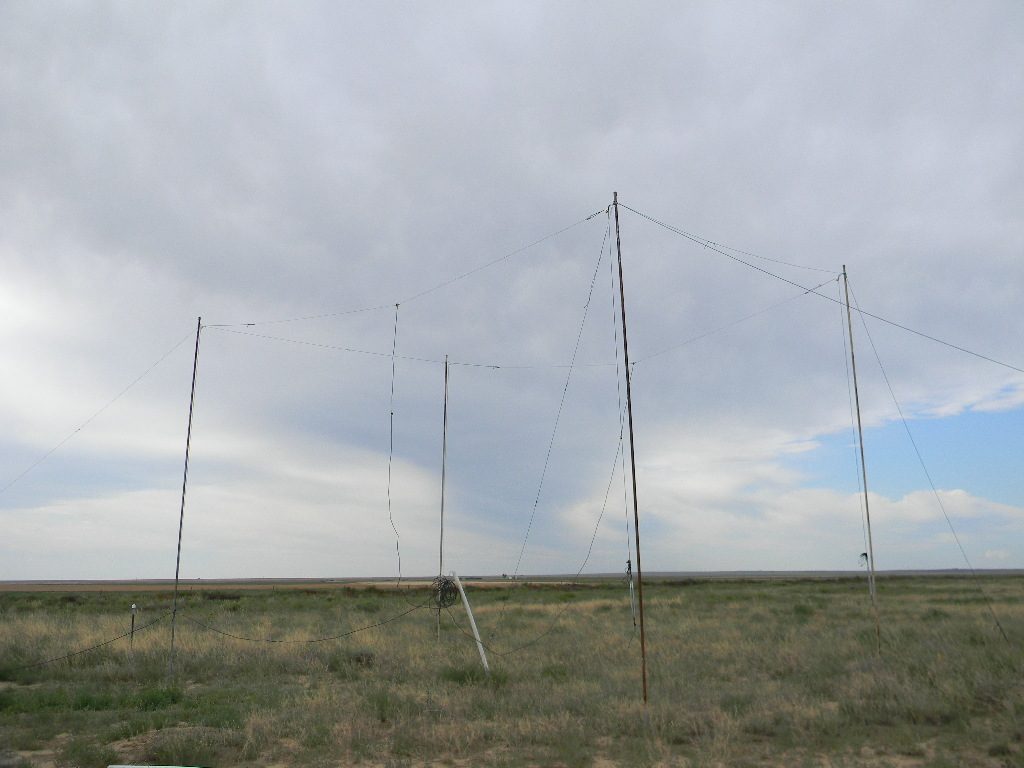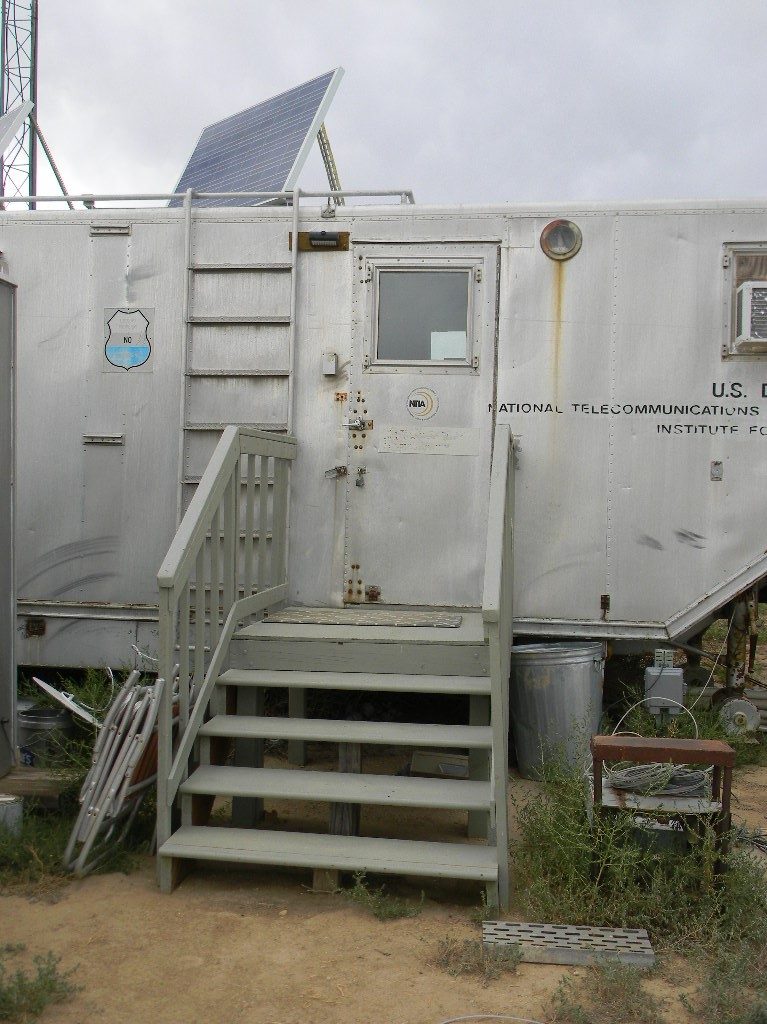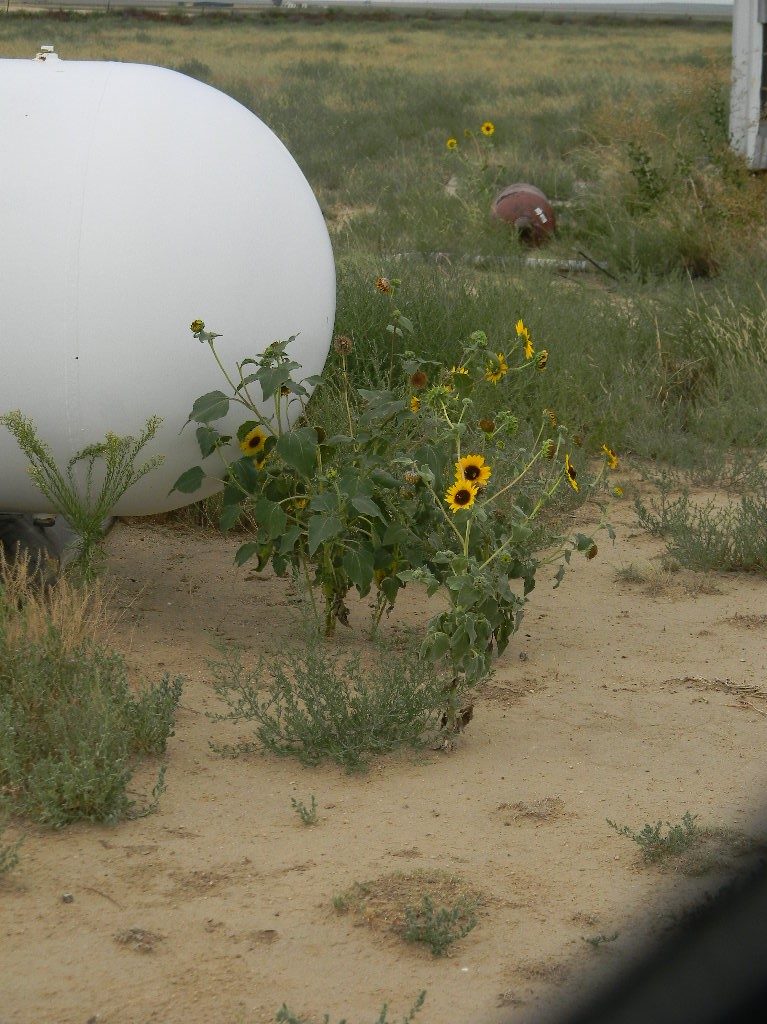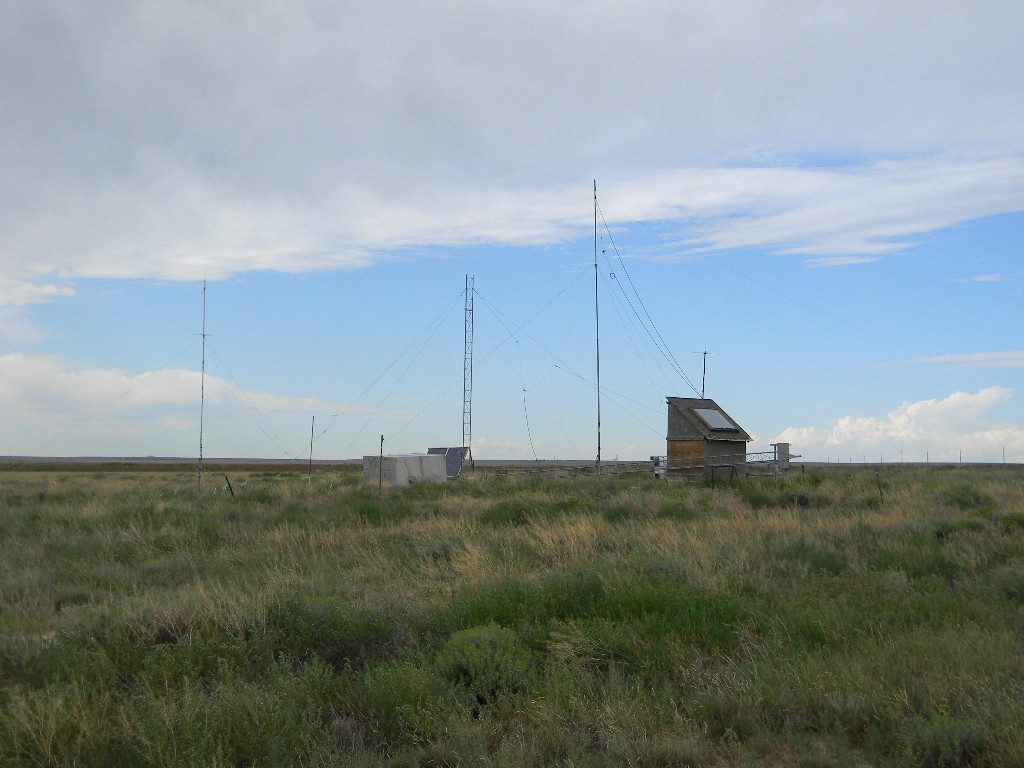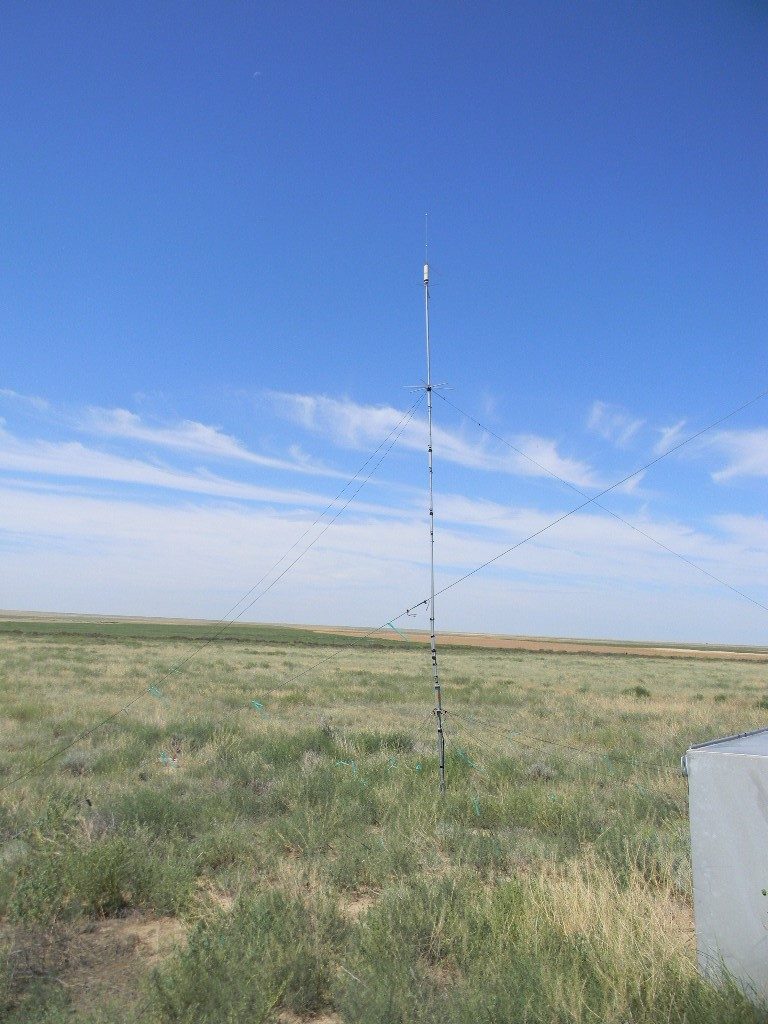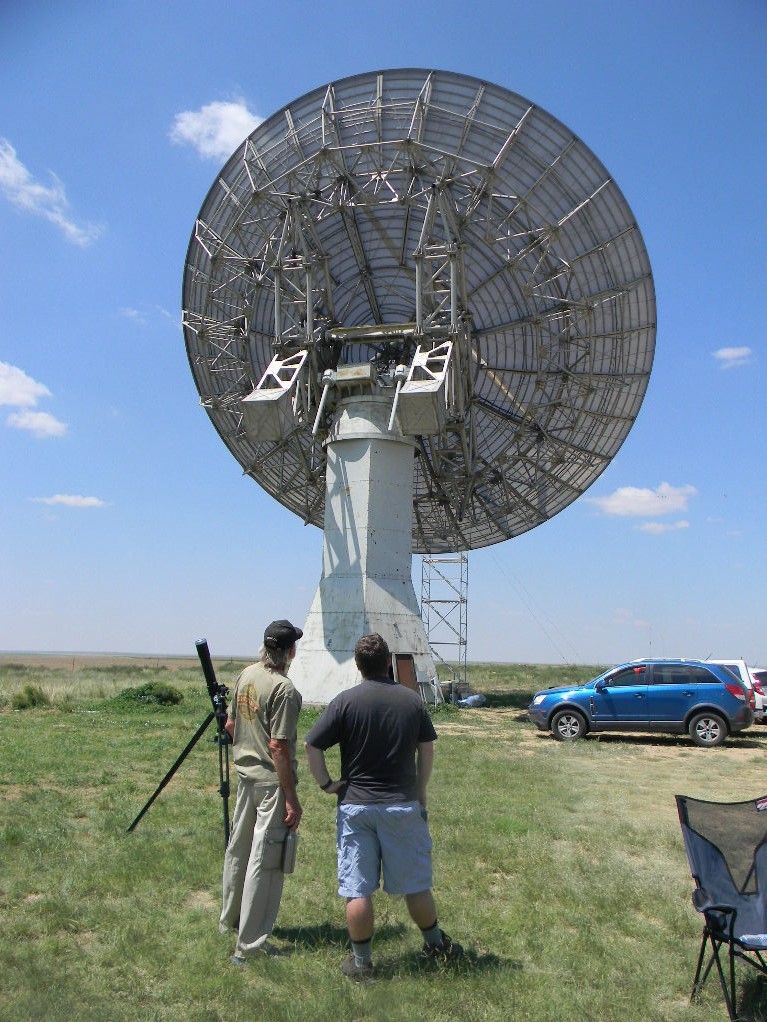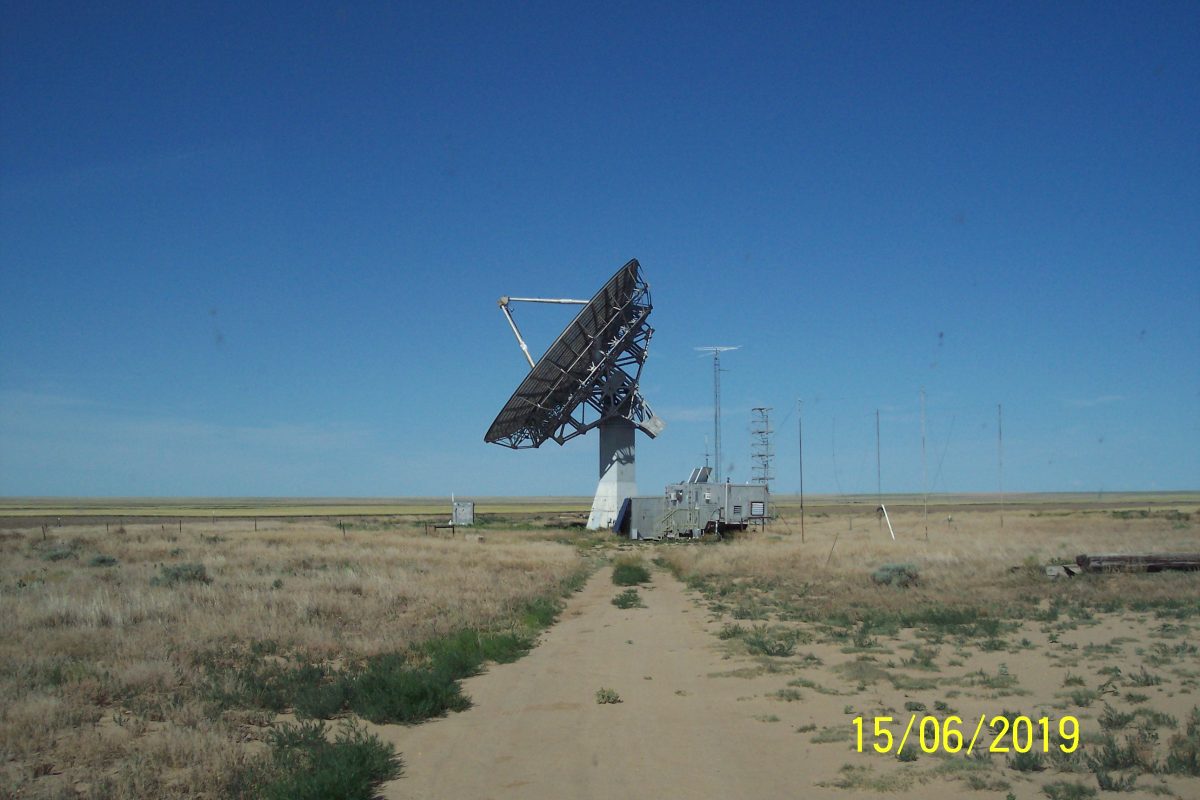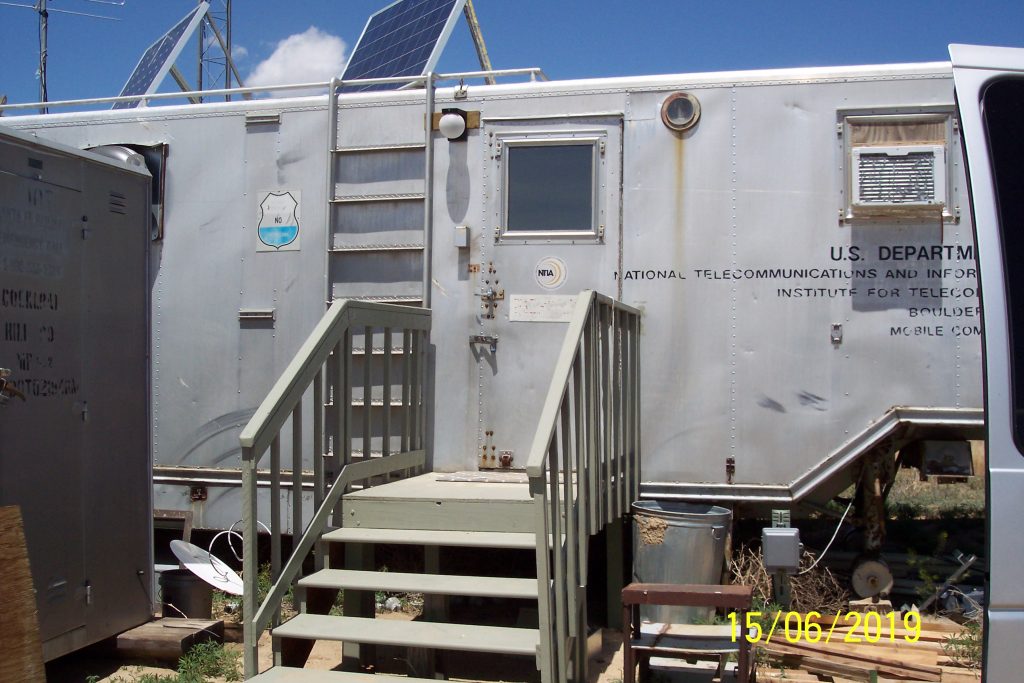Minutes by Bill Miller
Attendance: Ed Corn, Gary Agranat, Myron Babcock, Phil Gage, Rich Russel, Bob Haggard, Dave Molter, Lewis Putnam, Jonathan Ares. Online via TeamViewer: Tony Bigbee.
Next work Trip in 21st of Sept. Gary and Ed may also use the 28th for to work on the tower.
- Pointing System 1 HW/SW status and completeness: Phil Gage, Dave Molter, Johnathan Ares
- 3 weeks ago. Fixed the bad bit by jumpering to another channel and changed the SW to match. Tested and Ed verified last weekend.
- Dish mount stiction and inertia make continuous control too erratic so need to do a step and drift control.
- The team took data on the command voltage verses speed and found both axes to be pretty linear. See the graph.
- Glenn added a computer supported manual control that tells the operator what commands to give the system to track manually. A little labor intensive but works.
- With elevation axes is now stable and we should do a calibration using astronomical objects.
- Should also mark the feed horn mountings to reduce the RF pointing error when changing or reinstalling the feed antenna.
- Make a table of offsets for each feed and do a calibration for each feed.
- Bill gave system 1 team the control relay circuitry used in System 2.
- Pointing System 2 HW/SW status and completeness: Bill Miller
- The PID control system that Ed Johnson implemented in the SW has been tested and can drive the dish mount to within one or two bits on the encoders.
- The system worked fairly well on the last test in July except that the system would hang up and continue to drive the mount when it should have stopped. This sometimes caused an overshoot or required manual shut down.
- Bill is building a physical simulator to make it easier to trouble shoot the system 2 without the Plishner Dish. In this way Ed can work on the SW at home and work out these last bugs.
- It would be nice to have a second spare encoder to work this but the lowest cost one found on eBay was over $500.
- Synchro pointing system status and completeness: Bill Miller
- The Azimuth Synchro system worked when installed last year. Bill installed the Elevation Synchro in the early June Trip but when testing there was a problem in the system with a fault to ground. This is 120VAC supply current flowing where it shouldn’t and must be fixed to be safe.
- Several of the old terminal boxes were used in the hookup. Bill suspects that one of those is causing the leakage. We will have to trace down and correct this before the synchro can be used as a backup pointing system.
- Members are asked not to plug the synchro panel into AC power until this is resolved.
- Dish Feed system status and changes
- There was apparently a lightning strike on the dish this summer that took out the feed electronics and the power supply in the trailer.
- Steve worked on the feed and found a bad amplifier. Steve rebuilt the amplifier pack and still found another bad amplifier. Skip sent Steve a set of amplifiers that he will install on the next trip.
- Steve has the noise source to test the RF through the amplifier chain.
- The power supply was also bad, and Skip shipped a new one that works.
- Preparation for Stratospheric and Moon Bounce (EME) radio operation.
- Ray and Steve terminated the hardline on the 3rd deck and will attach to extensions down to the tower base. One hard line is complete.
- Need to be careful to get the feed mounted exactly as we had it.
- Hope to be able to do Stratospheric long distance communication and Moon bounce (or EME) in the autumn or near future.
- Status of Hydrogen Detector at Rich’s House
- Rich has taken 4 declinations in a daily drift scan and is generating a composite color image of the HI emission.
- Ray added a second LNA in the system that works much better than the first.
- Drift scan HI is working well and anyone in the core group can get the data from Rich’s computer. Send him an email.
- Pulsar Detector Status
- Have the Cavity filter and Low Noise Amplifier for pulsar has just been received and we have the SDR made for this calibrated and ready to go from Steve and Joe Martin in New Mexico.
- Will try for the strongest Pulsars with the long Yagi in Rich’s back yard.
- A dish with tracking or a Yagi array would be better.
- SETI observation plans and schedule
- Steve has a time crunch to fix the feed, power supply and amplifiers and make it work by the end of September for a 3 day run.
- Plans to do Tropospheric Radio Communication
- Want to do Texas, Kansas, New Mexico and Wyoming
- Plans for Moon Bounce Radio Communication
- Tentatively considering upcoming ARRL contest weekends. Two weekends in October 19th and 20th and November 16th and 17th.
- Ham Radio Station and Antenna Status
- Ed and Gary built the 50-foot tower and are ready to mount the tribander beam antenna for 10, 15 and 20 Meters on the rotor.
- Will also mount a 2 meter antenna on the side of the tower for the talk in radio.
- Ed reworked the buckled pipe section of the vertical antenna with some clamps and bradding to make a splint to repair.
- Gary rechecked the vertical antenna SWR with an antenna analyzer. He reports antenna is working as well or better. He posted a table of SWR values for each band behind the station operating desk.
- Repaired the broken radios.
- Gary operated three QSO parties: for Hawaii, Ohio, and Kansas, and made CW and SSB contacts on all three.
- In the open house we had a special event station and had a number of members get on the air.
- When using the Ham radio Equipment make sure to unplug the Antennas from the radios when you leave.
- The tower is a tip down design. The winch will tip down the tower to be able to lower the antenna and work on the antenna.
- Infrastructure items
- Ed has the Electrical system built out. A couple of stubs for add ons are all that is left.
- Construction
- Need a 32-inch steel clad pre-hung door for the top of the spiral staircase.
- Need cement board to skirt the trailer. Dave may have some.
- Installed the mid hallway door and it needs the blocking panel at the top
- In the future would like to slit the tool room into two compartments.
- Plumbing
- After he amateur tower is finished Ed will install the hot water heater.
- Will also install a European type shower.
- Ed wants to have a dump station with a grinder pump and pump out the sewer line.
- Ed uses a deveining rod method to locate the pipes and wires.
- He says the sewer line runs to the SE corner of the lot were there is a square vault and then a pipe leaves that and goes across the road.
- Outreach
- Open House. Bill owes the group a report.
- Need the Attendance list from Myron which was let in the Comm. Trailer
- Need any additional photos that you took. Paul Berge may have more.
- October Haswell Bazar. This will be in late October. Bill and Gary plan to support a table.
- Open House. Bill owes the group a report.
- Myron’s Treasures Report
- 2067.75 Checking
- 5740.11 savings
- At Monument Mega Fest made $356 selling surplus equipment.
- United way Philadelphia $30
- Collected $260 in dues and a $50 donation, $88 in food donations for the open house
- Expense for electric account is $128 for July and will be between $70 and $125 monthly.
- Telephone is $38.25/month for only 911 and the local exchange
- 55 members 35 voting 25 not voting
- 18 have not renewed
- $90 charge for Eads newspaper ads for open house
- General Discussion
- May approach Dalton Eichenberg on spraying or getting a brush hog on the site.
- CHIMES program in Canada. Canadian Hydrogen Mapping Long term project. They need infrastructure, power and fiber. 150 by 150 ft. footprint.
- The block wall has made a big difference in the mud flow.
The bulker hasn’t had a lot of water since the pump was replaced.
Batteries in the battery box in the battery room are dead and Ed will hook in the RR batteries for the Inverter power.
